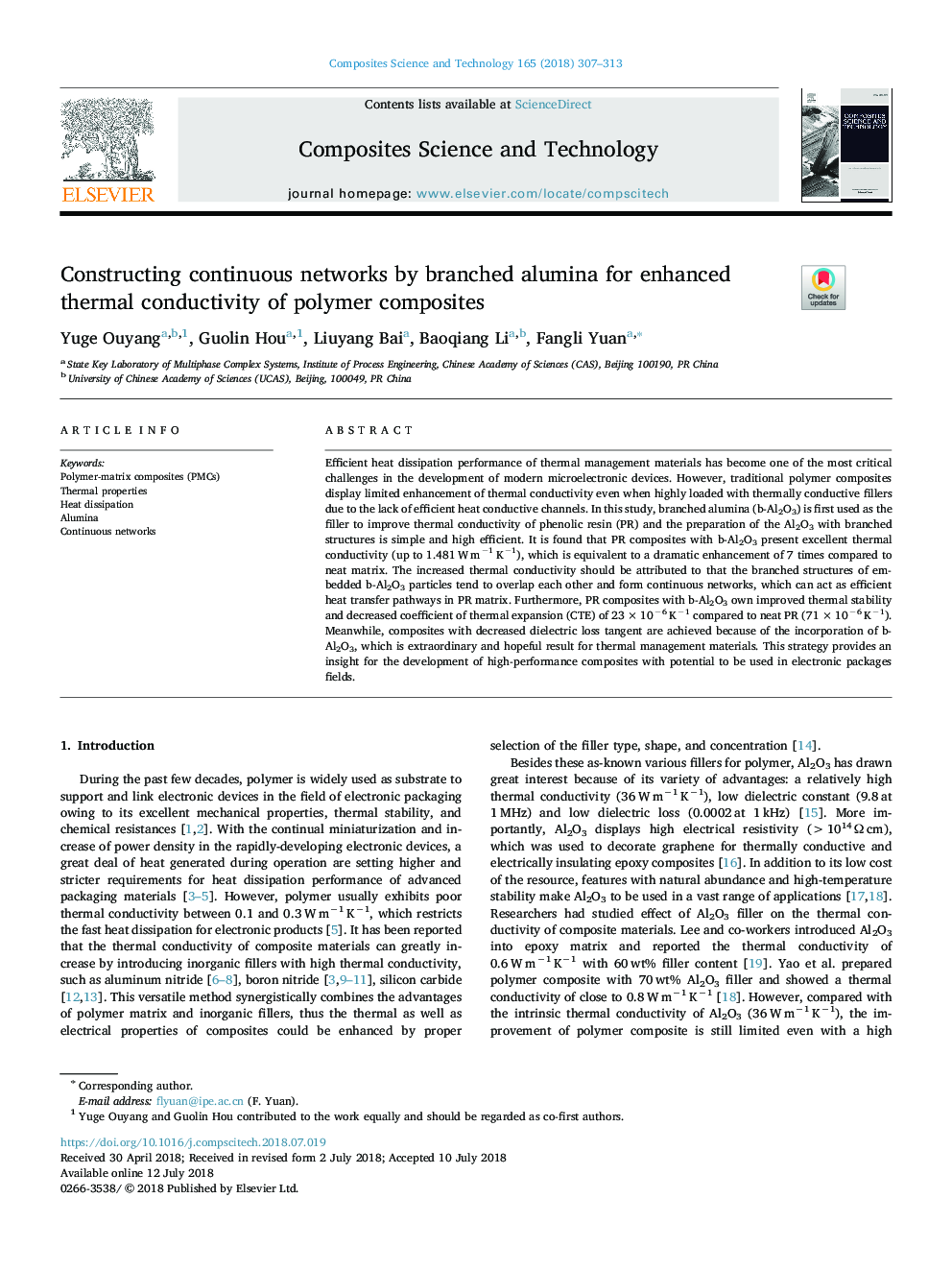| Article ID | Journal | Published Year | Pages | File Type |
|---|---|---|---|---|
| 7214137 | Composites Science and Technology | 2018 | 7 Pages |
Abstract
Efficient heat dissipation performance of thermal management materials has become one of the most critical challenges in the development of modern microelectronic devices. However, traditional polymer composites display limited enhancement of thermal conductivity even when highly loaded with thermally conductive fillers due to the lack of efficient heat conductive channels. In this study, branched alumina (b-Al2O3) is first used as the filler to improve thermal conductivity of phenolic resin (PR) and the preparation of the Al2O3 with branched structures is simple and high efficient. It is found that PR composites with b-Al2O3 present excellent thermal conductivity (up to 1.481â¯Wâ¯mâ1â¯Kâ1), which is equivalent to a dramatic enhancement of 7 times compared to neat matrix. The increased thermal conductivity should be attributed to that the branched structures of embedded b-Al2O3 particles tend to overlap each other and form continuous networks, which can act as efficient heat transfer pathways in PR matrix. Furthermore, PR composites with b-Al2O3 own improved thermal stability and decreased coefficient of thermal expansion (CTE) of 23â¯Ãâ¯10â6â¯Kâ1 compared to neat PR (71â¯Ãâ¯10â6â¯Kâ1). Meanwhile, composites with decreased dielectric loss tangent are achieved because of the incorporation of b-Al2O3, which is extraordinary and hopeful result for thermal management materials. This strategy provides an insight for the development of high-performance composites with potential to be used in electronic packages fields.
Related Topics
Physical Sciences and Engineering
Engineering
Engineering (General)
Authors
Yuge Ouyang, Guolin Hou, Liuyang Bai, Baoqiang Li, Fangli Yuan,
